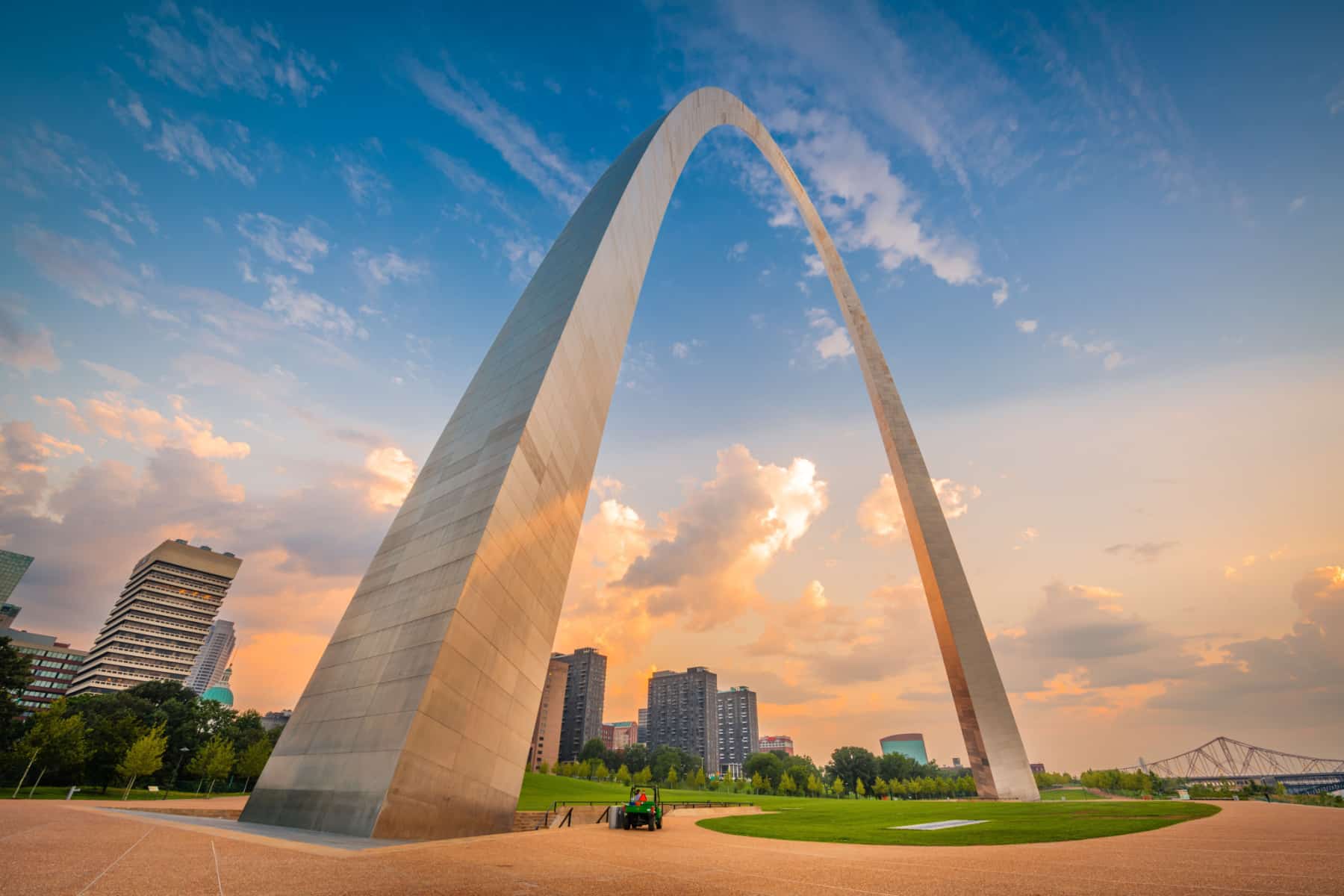
Gateway Arch National Park is unlike any other national park in the country, providing an urban experience around the nation’s tallest monument.
At just 91 acres, the national park around Gateway Arch remains the smallest in the country. Instead of climbing mountains, you can ride to the top of the 630-foot Arch. Around the park, you learn about westward expansion and critical civil rights issues that shaped our nation.
I grew up in St. Louis, and I’ve been visiting “The Arch,” as we call it, since my 1st-grade field trip. I sat on those famed riverfront steps every year to watch the 4th of July fireworks.
Living in Florida in 2018, a friend said, “Hey! Your hometown has a national park at the Gateway Arch.” I said, “Oh, no, The Arch isn’t like Arches National Park. It’s a structure built by humans in the center of downtown.” Maybe it was a national monument now?
I was flabbergasted, as many were, but yet still proud of my hometown making things happen. Especially so in a downtown more known as the “Most Dangerous City in America.”
Whether you’re a history buff, a thrill-seeker, or just plain curious, this guide covers it all. You might be surprised how much stuff they can fit into 91 acres of urban Mississippi riverfront.
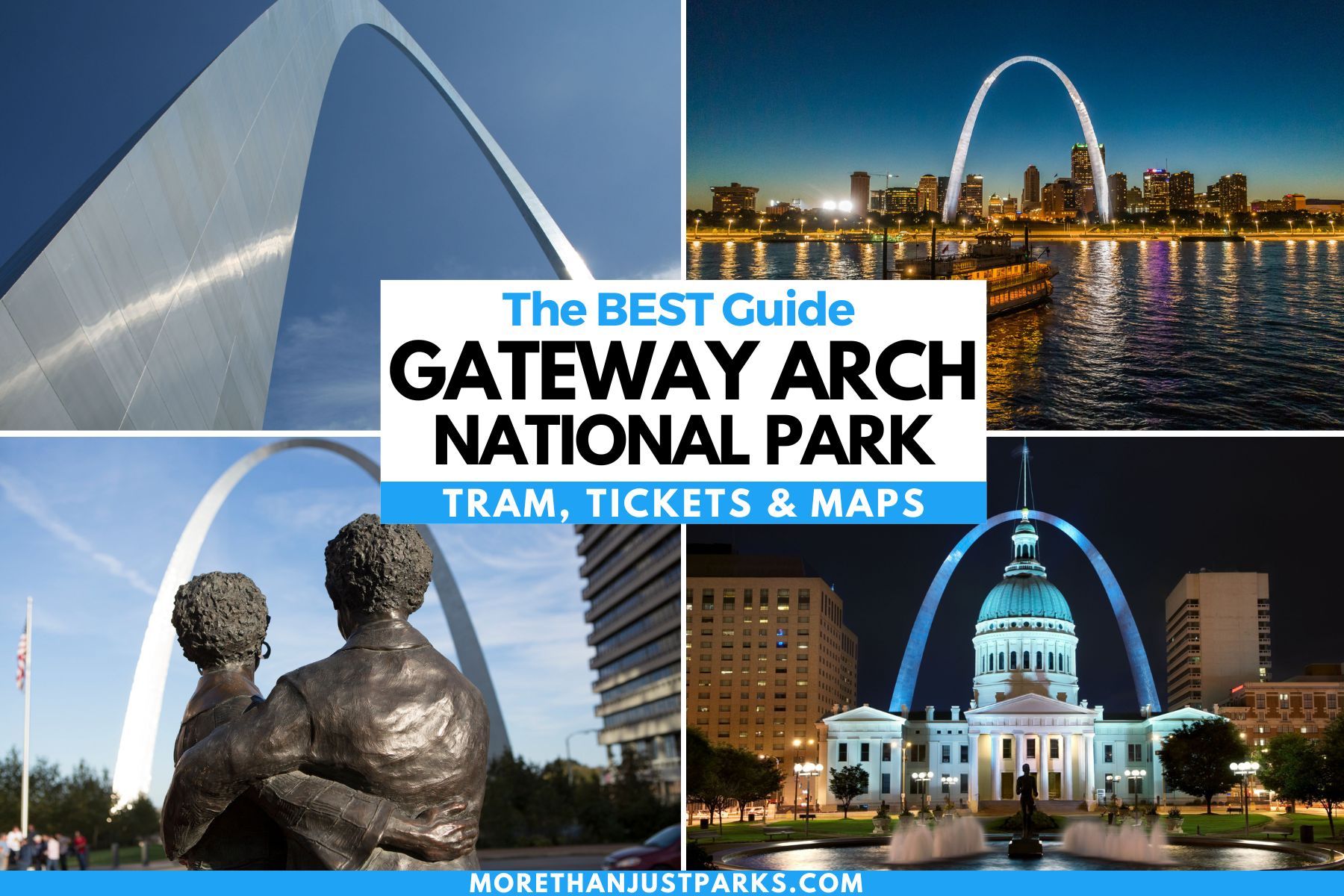
TABLE OF CONTENTS: EPIC Gateway Arch National Park Guide
Table of contents: EPIC Gateway Arch National Park Guide
5 Quick Things to Know about Gateway Arch National Park
- Walking the grounds outside the Gateway Arch and inside the museum is free, but you’ll pay for tickets to ride the tram, take a riverboat cruise, or other add-ons. Your America the Beautiful Pass will get you a discount on some of the attractions here, plus access to 2,000+ public lands for a year.
- The National Park Service doesn’t offer parking, but you can get a discount at the 200 S. Broadway parking garage. Since the garage is shared with the public and is close to Busch Stadium, you’ll want to pay for parking in advance. Otherwise, park at your own convenience around downtown St. Louis.
- Timed entry for tram rides to the top of Gateway Arch is in place year-round. Buy your tickets as soon as you know you’ll be visiting. Especially in summer, these can sell out quickly.
- Expect to go through security when going inside the Gateway Arch, much like you do at an airport. This could take up to 30 minutes.
- Two park seasons here mean hours change between Memorial Day and Labor Day for summer, and winter hours are in place from Labor Day to Memorial Day. The riverboats only run from March through November.
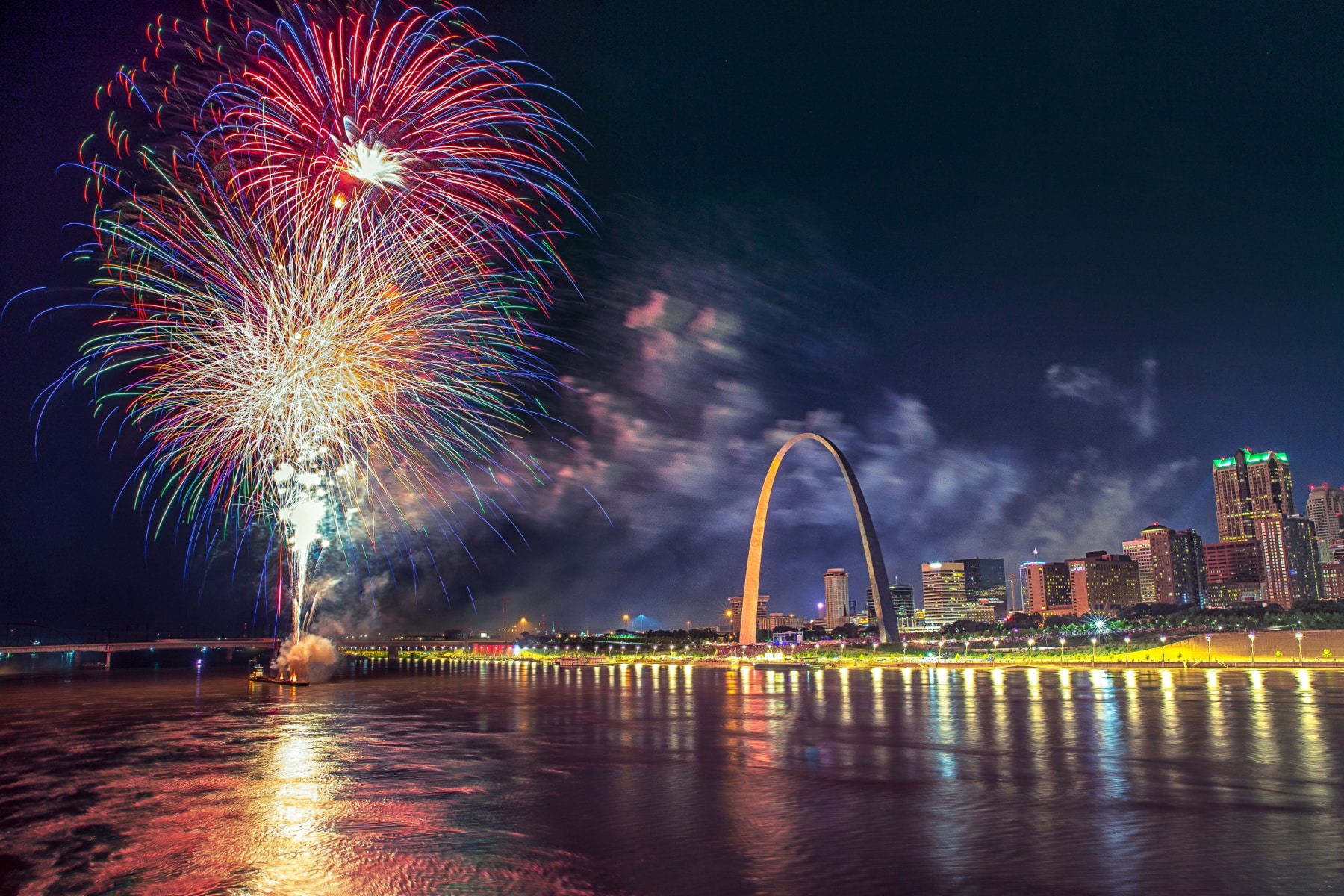
Where is the Gateway Arch?
Gateway Arch National Park sits on the Mississippi River at the edge of downtown St. Louis, Missouri. The city rises around the park, making it the only urban setting national park in America.
The main section of the outdoor “park” setting is between the river, I-44, Poplar Street, and the Eades Bridge access road. It’s worth noting that the park walks over the interstate in a way that makes you not realize there’s an interstate below you.
In addition, several trails wind around the reflection ponds of the park, and that area spans more than 12 football fields in length from north to south and about three football fields from east to west. That said, this is far from “hiking.”
A two-block section stretches west past the highway walkover. That’s where Luther Ely Smith Park and the Old Courthouse are located.
Gateway Arch Map
FASCINATING FACTS: To learn more, check out our 10 Fascinating Facts About Gateway Arch National Park article.

Getting to Gateway Arch National Park
The drive from Gateway Arch National Park to St. Louis Lamber International Airport takes about 20 minutes on I-70. You’ll pass some of the most dangerous parts of St. Louis, so don’t leave the interstate.
I would recommend going a few more miles to drive I-64/Highway 40 to I-170 to get to the airport. Plus, you’ll pass some of the more iconic locations of the Gateway City.
St. Louis’ downtown offers a perfect position for a road trip, as it’s where I-64, I-55, I-70, and I-44 meet.
- Chicago: 296 miles, 4:30 Drive Time
- Kansas City: 249 Miles, 3:50 Drive Time
- Louisville: 260 Miles, 4:00 Drive Time
- Memphis: 284 Miles, 4:00 Drive Time
- Oklahoma City: 499 Miles, 7:25 Drive Time
The Amtrak station in St. Louis is just 1.5 miles away and also close to Union Station.
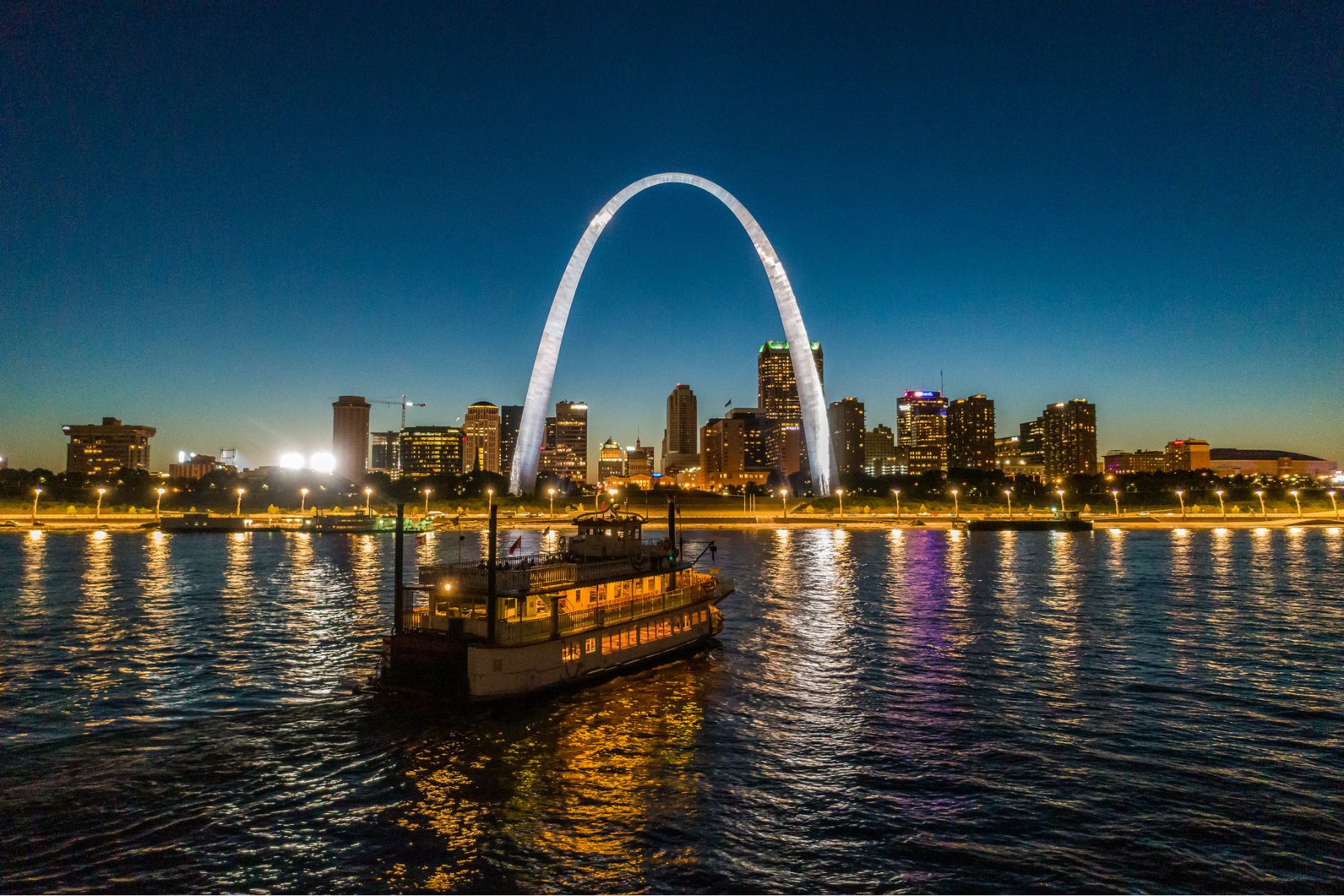
Things to Do at Gateway Arch National Park
For the purposes of this article, we’re just going to focus on things to do at Gateway Arch National Park or activities affiliated with the park. For more about visiting St. Louis, check out Explore St. Louis.
The Museum at Gateway Arch
One of the best reasons to explore Gateway Arch National Park is the free museum underneath the legs. I am so used to calling it the Museum of Westward Expansion, but the name changed with renovations in 2018. It was the first facelift since 1976.
Here’s what to expect:
- Six interactive galleries: Explore over 200 years of history through six distinct galleries, each with its own unique theme. You’ll encounter stories of the city’s founding, the Lewis and Clark expedition, the Dred Scott case, and the construction of the Gateway Arch itself.
- Multiple perspectives: The museum strives to present a well-rounded understanding of history by showcasing diverse viewpoints and experiences. You’ll encounter stories from Native Americans, European settlers, African Americans, and other groups who have shaped St. Louis.
- Artifacts and interactives: The museum brings history to life with a collection of over 1,000 artifacts, including clothing, tools, and documents. You can also engage with interactive exhibits that allow you to explore different aspects of St. Louis’s past.
- Universal design: The museum is designed to be accessible to visitors of all abilities. Wide pathways, clear signage, and tactile exhibits make it easy for everyone to enjoy the experience.

Ride Up the Arch
The ride up the arch offers an experience you can’t get anywhere else. Somewhere between a gondola and an amusement park ride, the “pods” fit. You do need timed entry tickets to take this ride.
Gateway Arch Tram Ride
Get to Gateway Arch National Park a good hour before your tram tour time since you’ll need to go through security and walk to the tram access points. Be prepared to wait up to another 30-60 minutes to get on the tram. During this time, video and ranger presentations will keep you attentive.
Five people can fit in a pod at one time, meaning you could share the pod with people outside of your party, or your larger party might be split up between two pods. Trams go up and down the “legs” of the arch.
DON’T LIKE SMALL SPACES? If you’re not good with confined spaces, you should know this is a small, futuristic pod about five feet in diameter. You can ask to sit in a pod to see if you’re comfortable enough to take the tour before you buy a ticket.
The ride takes four minutes to the top, traveling about 750 feet (remember, you started underground) at nearly four miles per hour. The pod sort of clunks along on its way up, like a Ferris Wheel or rollercoaster. The doors have windows, but you won’t see anything but the mechanical inseam of the Arch legs.

Top of the Gateway Arch
You arrive at the top to find the long, arched hallway that is the top of the Gateway Arch. The window designs give you an awkward but intimate look at the landscape. The top of the Gateway Arch offers 32 windows (16 on each side), and the window size is about half a foot tall by over two feet wide. You’ll lean over on the “counter” below the windows to get the best views.
One thing that changed at Gateway Arch National Park once the official designation was given is that you can’t stay at the top as long as you’d like. You’ll get no more than 10 minutes to soak in the views and snap photos. As many as 6,400 people a day take the ride to the top during the busy summer months.
SCARED OF HEIGHTS?: I’ll admit, I don’t like heights. However, the Arch is one place that never bothered me too much. You aren’t constantly aware that you’re 630 feet up. The only vertigo happened when I leaned in to look out a window. However, some people would not handle the heights here well. I think the cramped pods are worse for claustrophobia than the top of Gateway Arch is for acrophobia. Disagree? Let our readers know in the comments below. We all have different experiences.
The ride back down takes three minutes, with gravity helping shave off a minute.
To get the best views a the top of the Gateway Arch, plan your trip in winter, and time your entry to the sunset. You’ll get a great view looking west over St. Louis as the sun drops on the sky – well, at least 10 minutes of it.
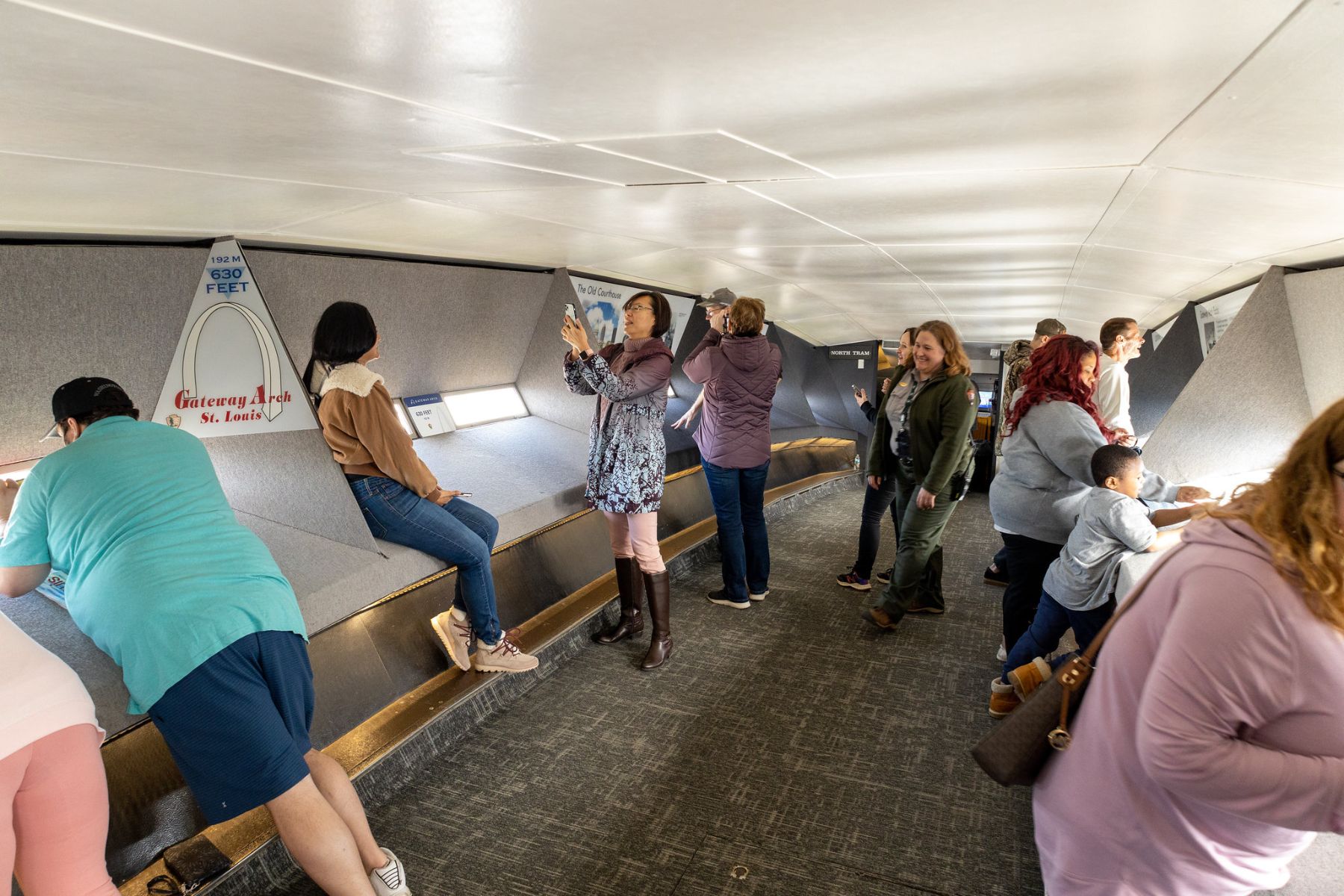
Virtual Reality Tour
Another add-on or individual ticket purchase available at Gateway Arch National Park uses virtual reality to transport you back to the 1850s in St. Louis. The Cobblestones & Courage ticket is no more than $10 and is recommended for those five and older.
Guests sit in a theater wearing VR goggles and see the working waterfront during the Steamboat Era of the Mississippi River.
Since most of what was first downtown St. Louis was torn down to make way for the arch in the mid-1900s, it’s the most vivid way to see what life was like back then.
Monument to the Dream Movie
The 35-minute documentary focuses on the architecture and engineering of the Arch, from architect Eero Saarinen’s Design to those that made the Arch defy gravity and stand taller than any other monument in America.
You can find copies of this documentary online for purchase, but unless there’s a bootleg YouTube video, the $7 ticket price to watch the movie under the Arch is one of the best values.
Monument to the Dream received an Oscar nod for Best Documentary Short at the 1968 Academy Awards. It didn’t win, but guess what did? The Redwoods, a movie that helped create Redwood National Park in 1968.

Riverboat Ride
As an avid Mark Twain fan in my younger years, I dreamed of boarding one of those riverboats and taking off with Huck Finn to explore.
Your choices for a boat ride include a one-hour ride with narration along the way, special cruises (like with an NPS Ranger guide or Marine Highway System expert), or a cruise with a meal for lunch or the skyline at dinner.
For what it’s worth, the price to take the one-hour boat is almost 40% less than the boat ride for Many Glacier at Glacier National Park. In addition, the riverboat ride in St. Louis is the same if you purchase it with your national park tour or as a separate activity.
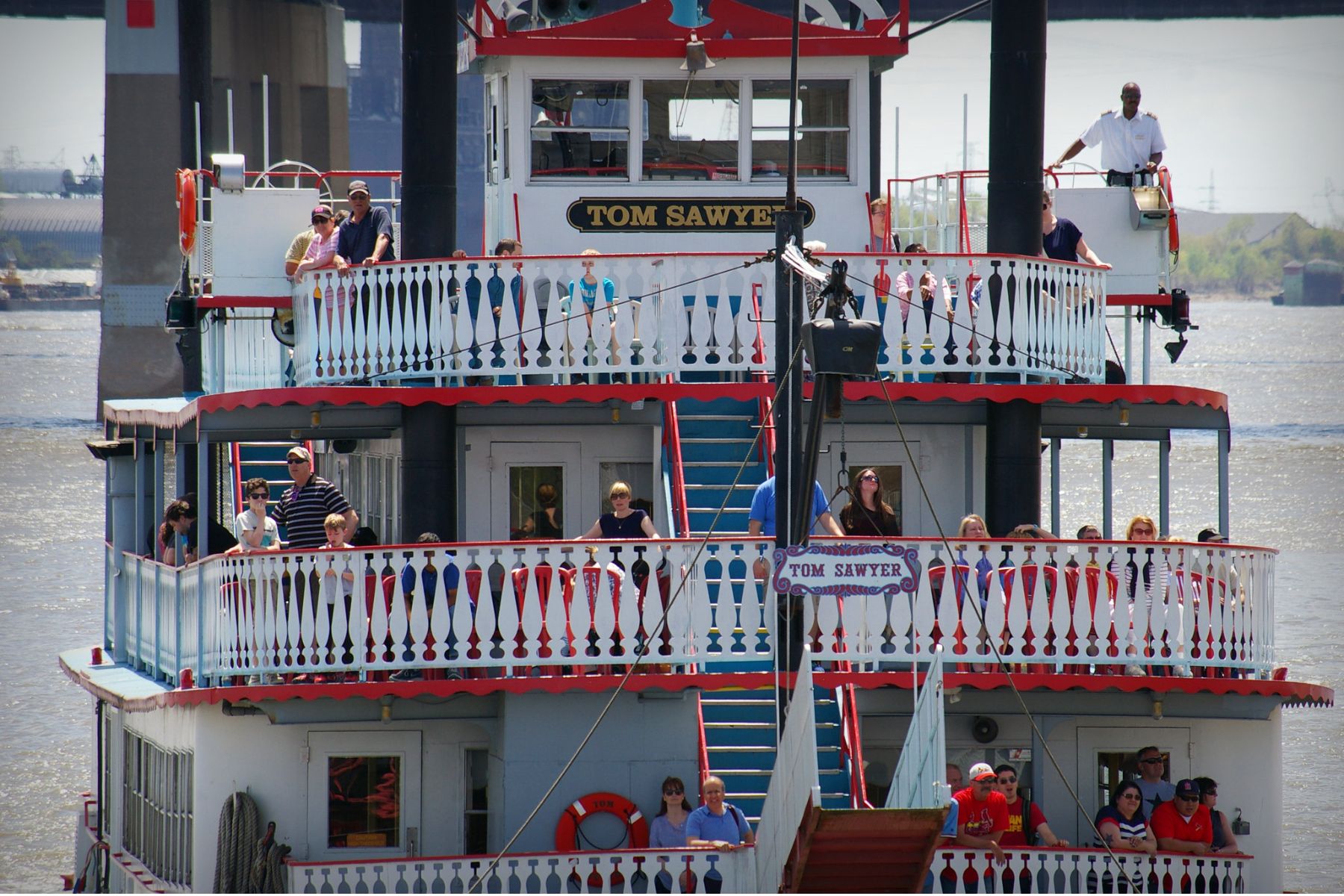
Old Courthouse
The Old Courthouse in St. Louis holds more history than the average non-Missourian would know off the cuff. A major renovation project slated to finish in mid-2025 will tell the stories of the hallowed halls with new exhibits and revamped services for all.
The courthouse dates back to 1828, but the increase in the population of St. Louis demanded another courthouse, which was built including the original structure in the 1840s. Another period of construction followed in 1851.
The dome of the Old Courthouse taps into the design of St. Peter’s Basilica in Rome, much like the U.S. Capitol Building does.
We’ll update this section with more photos and information as the renovation completion nears.
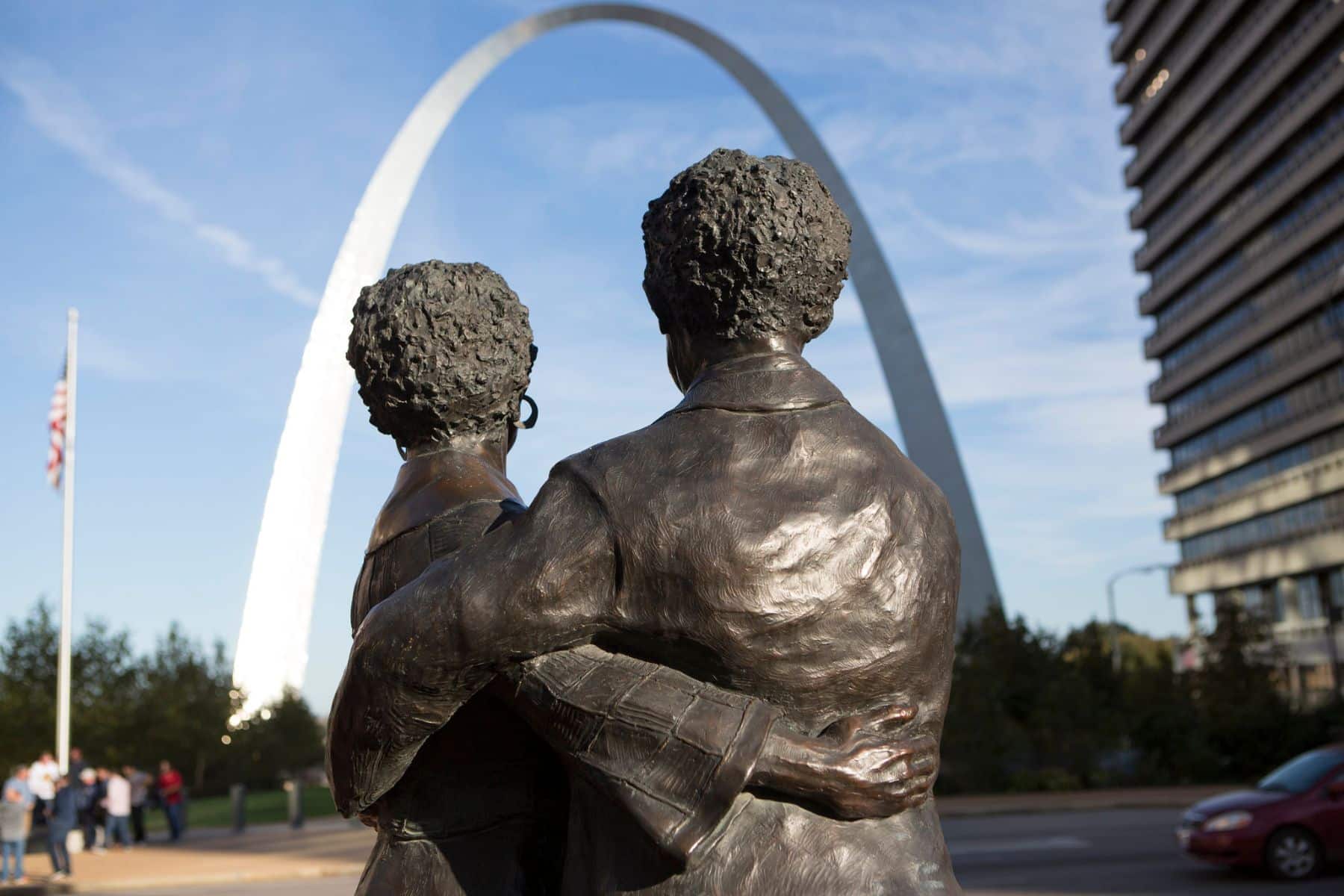
Old Courthouse History
The Old Courthouse in St. Louis holds a significant place in both American and civil rights history. Here are some of the noteworthy events that transpired within its walls:
- Dred Scott Case: In 1847 and 1850, the first two trials of the pivotal Dred Scott case, which challenged the legal status of enslaved people in free territories, took place here. Although Scott initially won his case, it was ultimately overturned by the Supreme Court, significantly escalating tensions leading to the Civil War.
- Virginia Minor’s Suffrage Case: In the 1870s, Virginia Minor argued her right to vote in the Missouri Supreme Court within the Old Courthouse. While she ultimately lost, her case became a rallying cry for the women’s suffrage movement.
- Underground Railroad Connection: While not directly part of the Underground Railroad network, the Old Courthouse witnessed hundreds of suits for freedom filed by enslaved people, highlighting the fight against slavery in the region.

Gateway Arch National Park Grounds
The outdoor space at the Gateway Arch National Park includes five miles of walking paths, two reflection pools, stairs leading to the levy of the Mississippi River, and a small park called Luther Ely Smith Square, named after the man who championed the effort to build a memorial here.
The Grain Staircase’s 65 steps feel more intense because they are wider than your average steps, with some longer spans in the middle to rest or soak in the views. The staircase spans 300-400 feet across, and many people sit here to enjoy lunch or watch the sunrise.
The pathways offer kiosks explaining local history and some of the surrounding landmarks like Eades Bridge, Laclede’s Landing, and Lewis & Clark’s adventures.
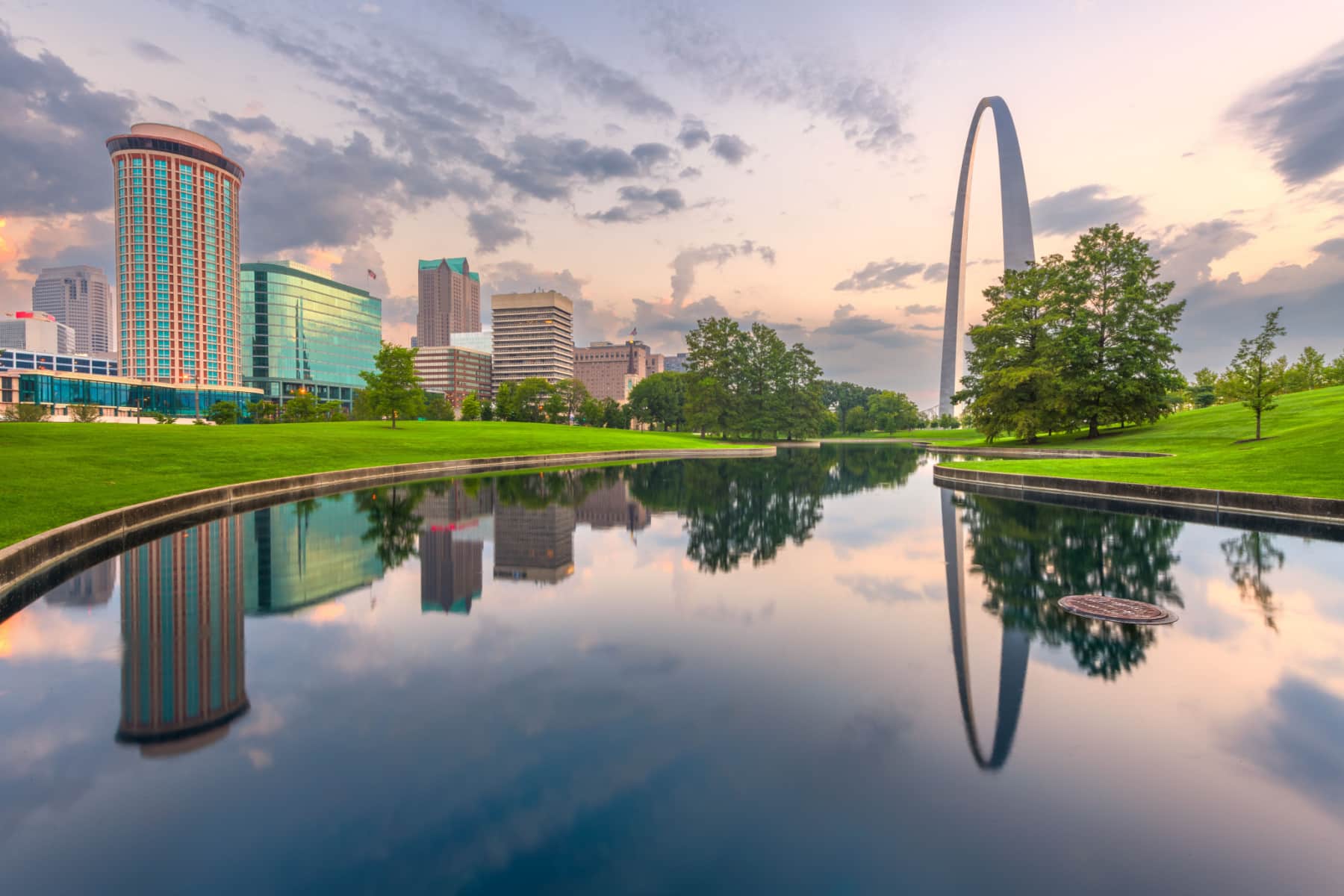
Places Near Gateway Arch National Park
The boundaries of the park are detailed on the map provided above, but without a fence or marked boundaries on site, you might not realize when the park ends and the city of St. Louis begins.
A few historical places to note:
- The Old Cathedral: The formal name is the Basilica of Saint Louis, King of France, and it was the first cathedral on this side of the Mississippi River. Self-guided tours are free, or you can visit on Sunday after mass to get a guided tour. The history here dates back to the 1760s.
- Eades Bridge: The northern pathways of Gateway Arch National Park take you along the edge of this marvelous feat of engineering and the first bridge over the river in St. Louis, finished in 1874. Some of the engineering inspired the Brooklyn Bridge in New York. Walt Whitman called it “a structure of perfection and beauty unsurpassable.”
- The Captains’s Return: A celebratory statue of Lewis & Clark with Lewis’s dog Seaman after exploring the West and returning to St. Louis several years later.
- Laclede’s Landing: “The Landing,” as locals call it, was where St. Louis all started as Pierre Laclede set up a fur trade in 1763. It’s right next to the Gateway Arch and is a great place to explore, but more of an entertainment district if you don’t know what to look for in the stunning architecture.
Busch Stadium, home of the St. Louis Cardinals, is just a few blocks away, and Ballpark Village is another great place to hang out before or after a visit to Gateway Arch National Park.
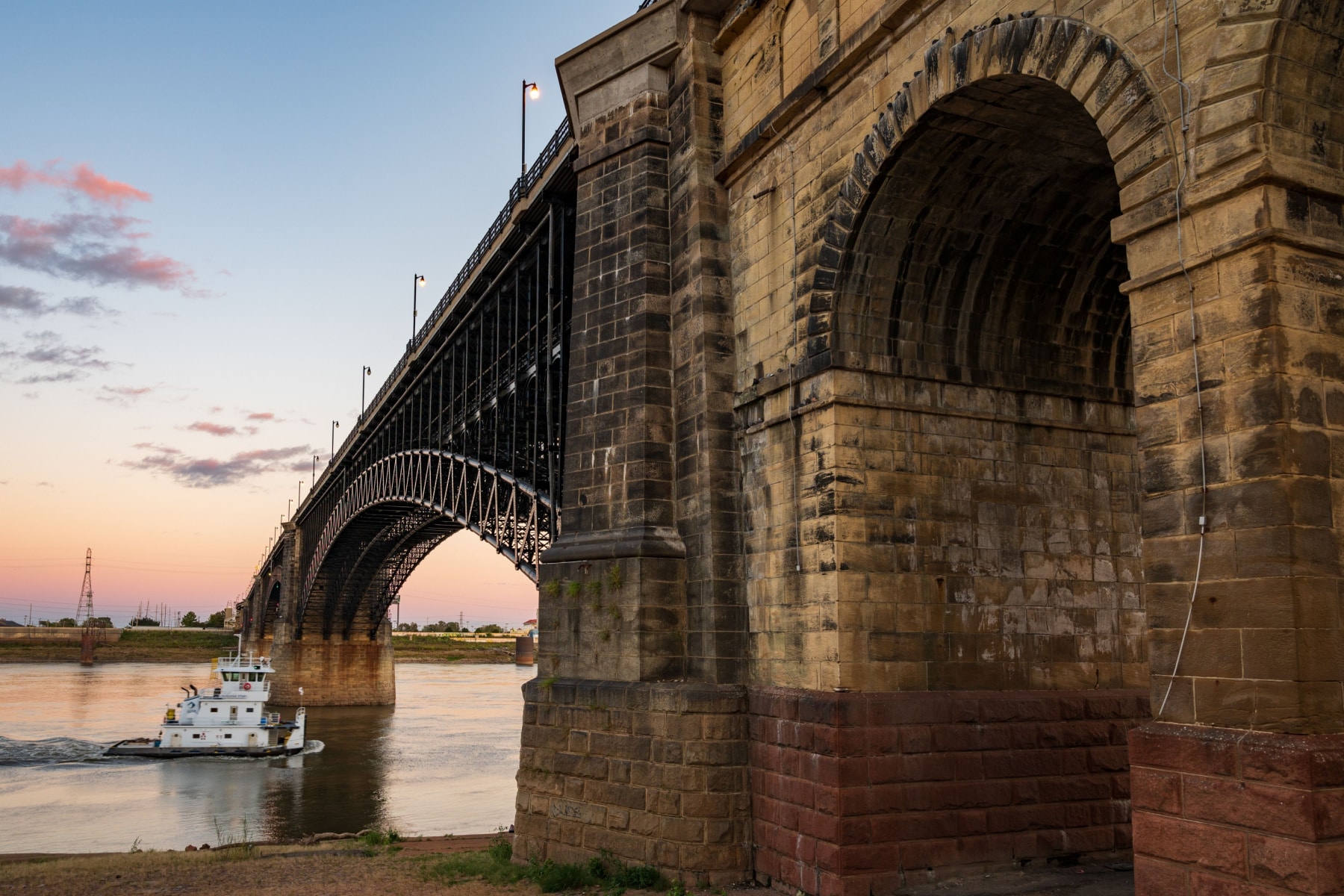
Why is Gateway Arch a National Park?
Many people wonder (or argue) about how a human-created Arch and courthouse fall into the National Park category. That’s in the same tier as the likes of Yosemite, Yellowstone, and Denali.
As it turns out, the memorial on the riverfront in St. Louis was always wrought with controversy.
The Jefferson National Expansion Memorial
Downtown St. Louis was derelict in the 1930s, at least the initial plot of land that held so much history through the Revoluntionary War, the Louisiana Purchase, and the first steps of Lewis & Clark. Luther Ely Smith convinced President Theodore Roosevelt to put it under the National Park Service.
Iterations of litigation followed, with some fighting back against taking 40 acres of prime riverfront and leveling it for a memorial. In the end, the strongarm of the federal government forced the railroad and utility companies off the land. A memorial was coming – like it or not, and that land no longer belonged to the city of St. Louis or its residents.
World War II stopped the process for a while, and then the search for an architect to create an icon was underway. The Gateway Arch was finished in 1965. It is now a global icon for St. Louis, though it’s unclear how many people know at first glance what it’s for.
National Park Designation
In 2007, a plan to create a multi-use riverfront park was presented without the support or knowledge of the National Park Service. (And I have a better chance of fitting into the jeans I wore in high school than the National Park Service ever giving up its land.)
In the 2010s, St. Louis began an effort to improve and renovate the area, but it took $380 million dollars and didn’t bring the financial boon that was expected. In June 2017, Missouri Senator Roy Blunt presented a bill to remove the name Jefferson Expansion National Memorial and change the name (and status) to Gateway Arch National Park.
Even the acting Deputy Direction of the Department of the Interior said in congresional hearings, “National parks contain a variety of resources and encompass large land or water areas to help provide adequate protection of the resources. The existing 59 designated national parks protect, at a minimum, thousands of acres each, and some span millions of acres… we believe that the Jefferson National Expansion Memorial is too small and limited…to be called a national park. Since it is a site similar to the Statue of Liberty National Monument…we believe that a more fitting name for the Jefferson National Expansion Memorial would be ‘Gateway Arch National Monument.'”
In an era where Congress moved slowly on many important topics, somehow, President Donald Trump signed the act establishing America’s newest national park just eight months later.
Political favors? A chess move to get more tourists? A tweaking of the stature that comes with national parks? Everyone has an opinion. Nobody has a choice but to accept it for what it is and enjoy the honoring of history, not the controversy.

Pin Gateway Arch National Park Guide
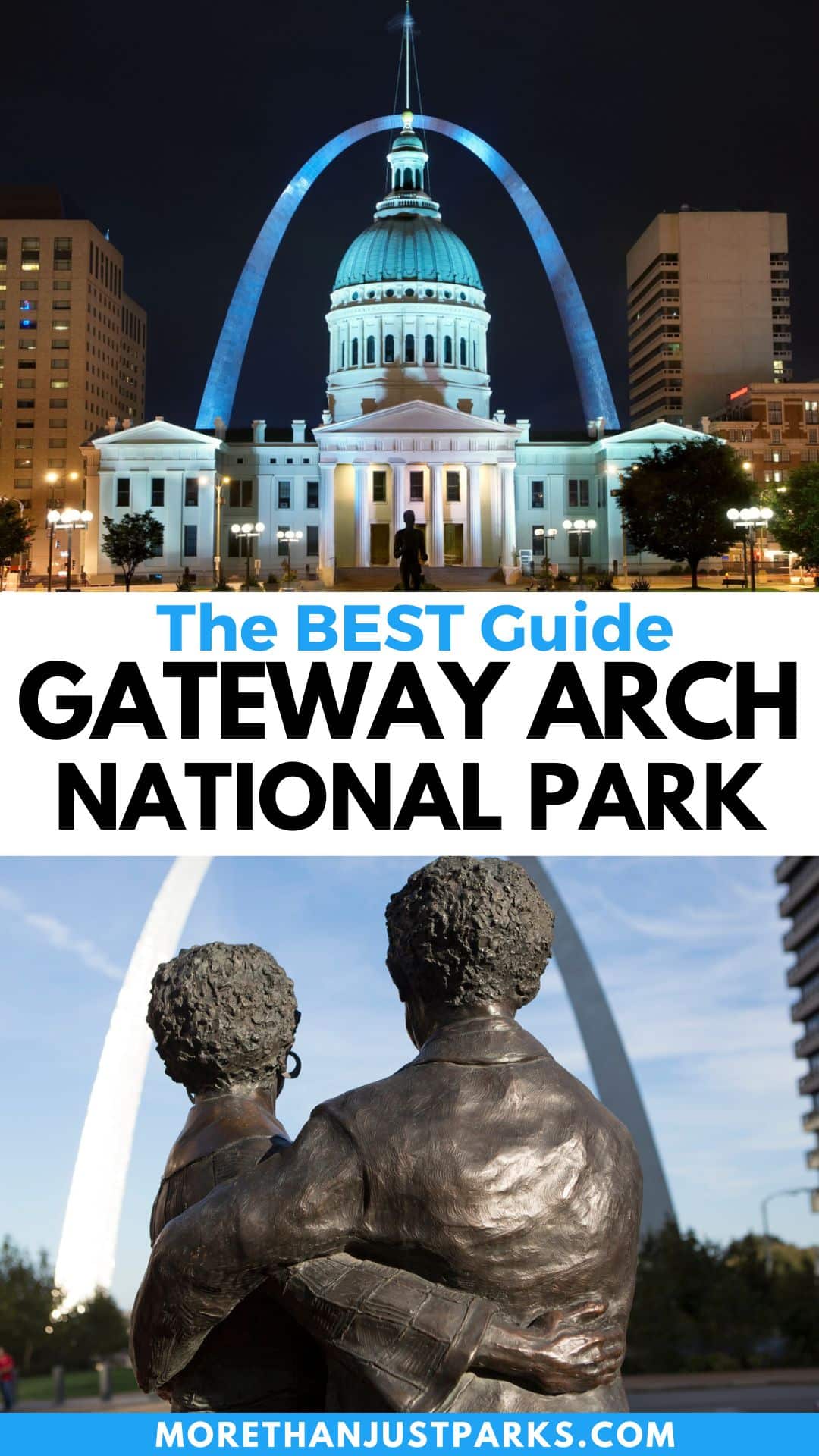
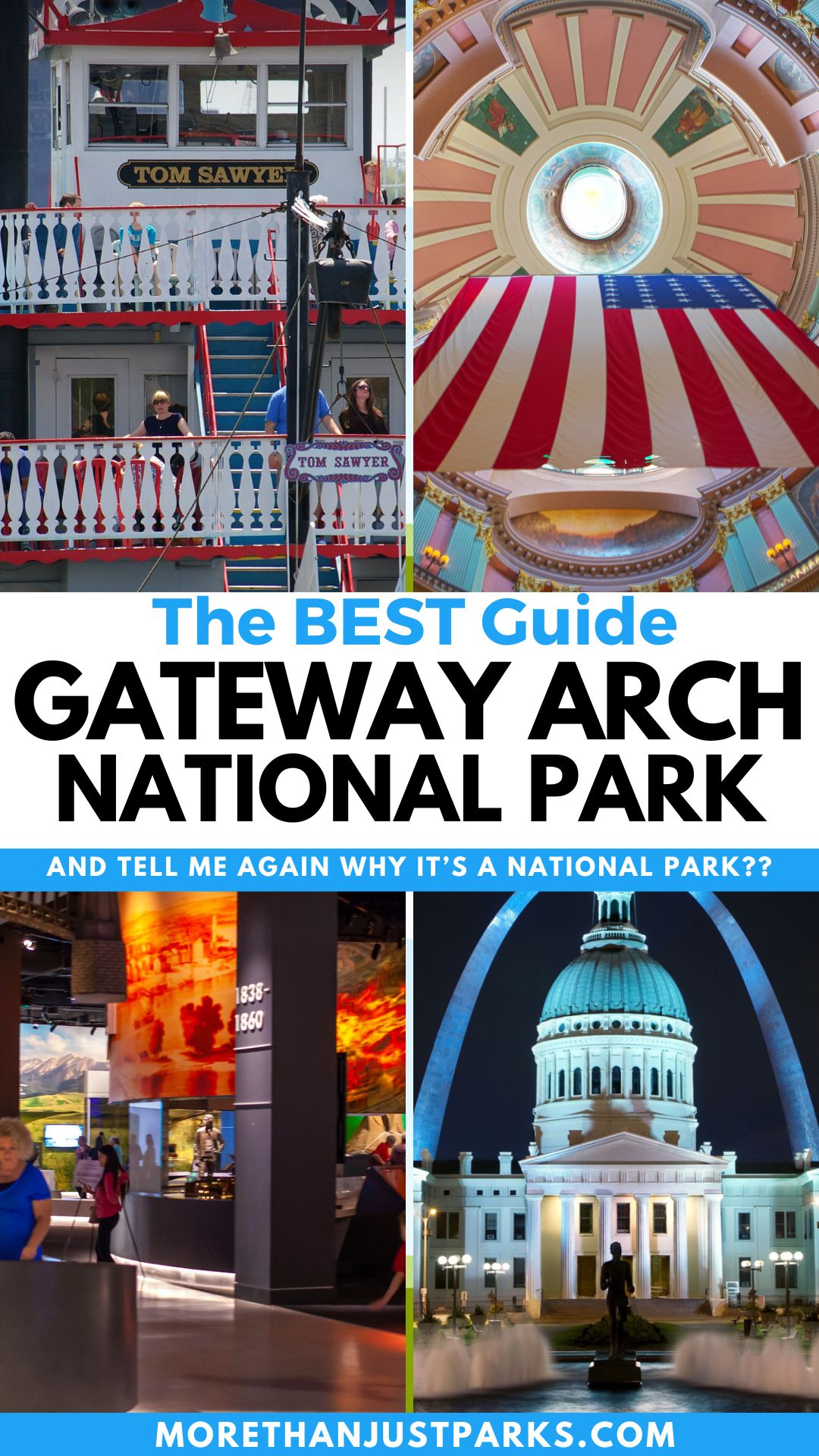
Helpful Related Links
More Near St. Louis: 5 EPIC National Parks Near St. Louis
Show Me More MO: 15 MUST-SEE Missouri Landmarks (Expert Guide + Photos)
Cross the River: 5 EPIC Illinois National Parks (An Expert Guide + Photos)
Land of Lincoln: 20 MUST-SEE Illinois Landmarks (Expert Guide + Photos)
Most Visited National Parks: Top 10 Most Visited National Parks (+ Complete List)
Least Visited National Parks: Top 10 Least Visited National Parks (+ Complete List)
List of National Parks: Complete List of US National Parks
National Parks Ranked: All 63 US National Parks Ranked by Experts
Map of the National Parks: Printable Map of the National Parks


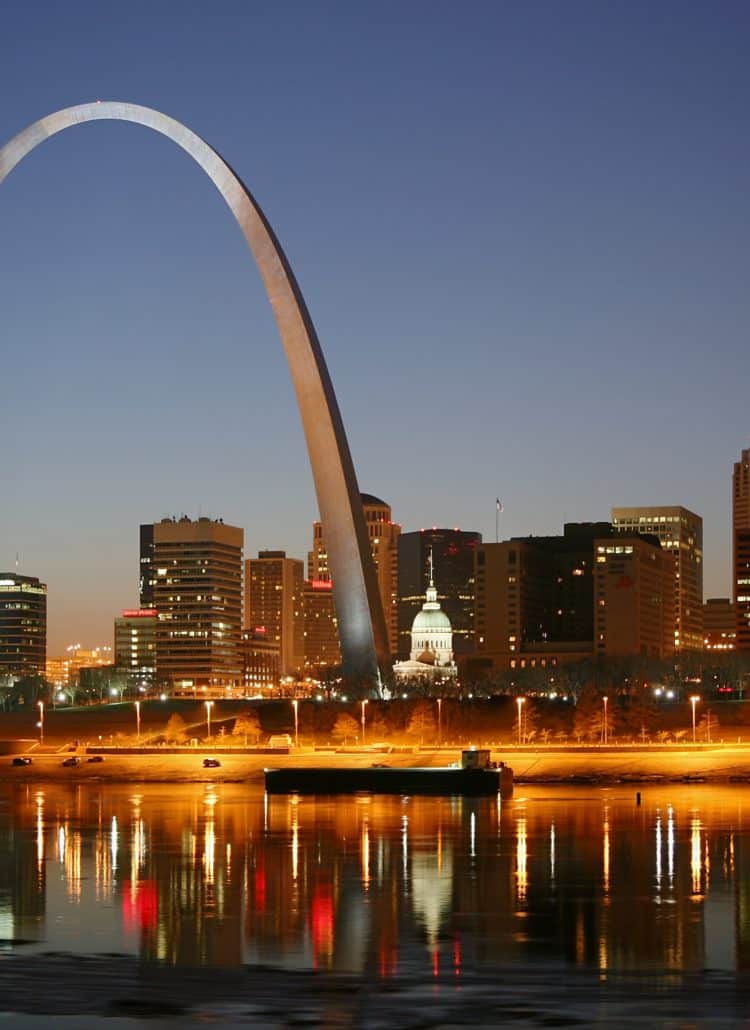


Leave a Reply